Vibrant ribbons of green and violet swirl across the polar sky, turning cold winter nights into a mesmerizing light show above the Arctic Circle. Tromsø, Norway offers one of the highest success rates for witnessing the northern lights, making it a dream destination for skywatchers and adventurers alike. With its unique mix of scientific accessibility, indigenous Sámi culture, and untouched wilderness, this northern city delivers more than just a visual spectacle. This guide reveals how to time your visit, where to go, and what to expect when chasing the aurora in Tromsø—ensuring you don’t miss nature’s most awe-inspiring performance.
Travel between October–April for peak aurora season
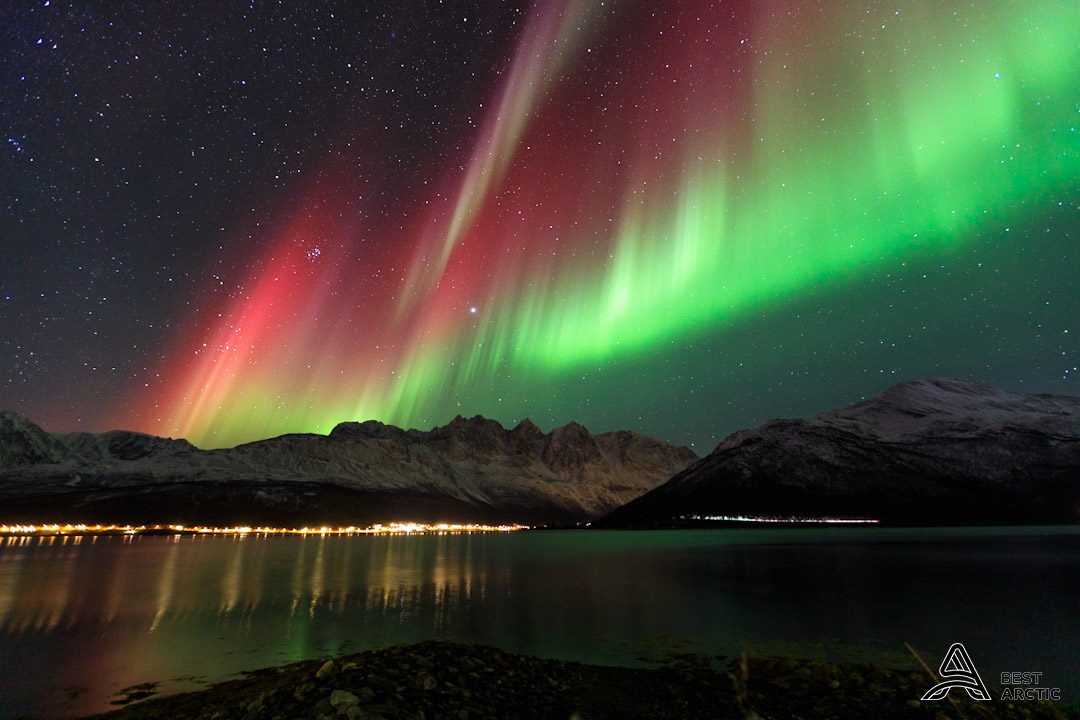
Northern Norway’s aurora activity reaches its prime between late autumn and early spring, thanks to long nights and optimal geomagnetic conditions. In Tromsø, this October-to-April window aligns perfectly with the darkest, clearest skies needed to witness vibrant Northern Lights displays. Daylight hours shrink significantly, especially from late November through January, allowing more opportunities for the aurora to appear even in the early evening. Statistically, March and October are known for clearer skies, while December and January offer maximum darkness despite more cloud risk. Solar activity tends to remain steady throughout this entire period, so your chances remain consistent if you time the weather right. With temperatures dropping well below freezing during peak months, snow-covered landscapes add photogenic contrast beneath the green and purple waves. Flights and accommodations tend to be in higher demand during these months, especially around Christmas and New Year, so booking well in advance is recommended. Avoid summer, when the Midnight Sun eliminates night altogether. Whether you’re hoping for an ethereal glow above fjords or snowy pine forests, this specific travel window is when Arctic Norway truly delivers on the promise of Northern Lights magic. Prioritize this timeframe for the best possible natural light show.
Stay 4+ nights to increase viewing probability
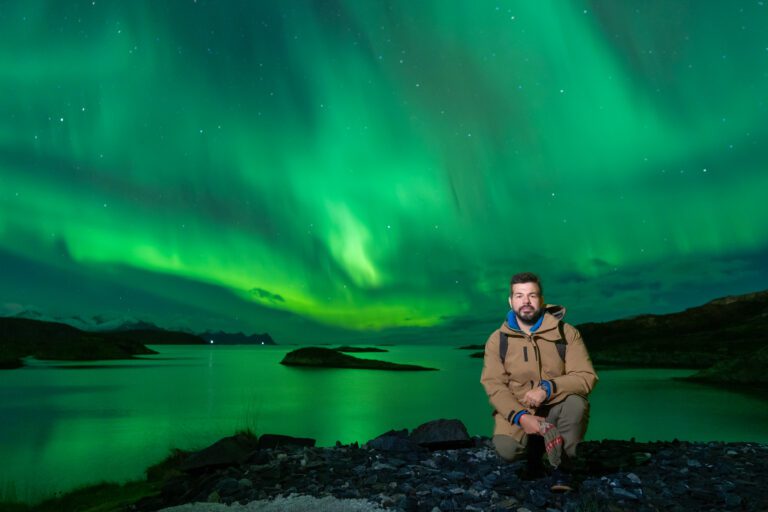
Short trips to the Arctic risk disappointment—especially if clouds or low geomagnetic activity mask the aurora. Extending your stay to at least four nights drastically improves the likelihood of seeing Northern Lights. In Tromsø and surrounding areas, the aurora isn’t guaranteed every night, and weather systems often shift rapidly. By spreading your chances across multiple evenings, you’ll increase the odds of experiencing clear skies and strong solar activity at the same time. Many experienced guides suggest a minimum of four consecutive nights for a solid viewing buffer. Some aurora chasers even schedule six or seven nights to maximize flexibility in chasing better weather across northern Norway. Longer stays also allow you to space out other activities—like dog sledding or fjord cruising—without sacrificing prime aurora hunting hours. From a logistical perspective, extended visits give you room to adjust based on local guide recommendations, forecast updates, and sudden KP index spikes. Since Northern Lights tours typically run after 6 pm, having multiple evenings open ensures fewer conflicts and less pressure. For travelers investing in once-in-a-lifetime experiences, giving yourself several nights in the Arctic sky’s glow is the smartest way to hedge against nature’s unpredictability and walk away satisfied.
Use small-group tours (≤15 people) for flexibility

Oversized buses with rigid schedules often underdeliver when chasing unpredictable auroras. Smaller groups—ideally under 15 participants—offer a more adaptive and intimate Northern Lights experience. With fewer guests, guides can tailor the route on-the-fly based on live satellite data, weather models, and real-time geomagnetic forecasts. This flexibility is crucial in Arctic Norway, where microclimates frequently shift across short distances. Small-group vehicles can detour quickly to clearer skies, pull over at unplanned scenic stops, and even linger longer if the aurora intensifies. Onboard guidance tends to be more personal, allowing time for one-on-one photography help, cultural storytelling, and warm drinks shared under the stars. Unlike large coaches, these smaller vans can reach remote viewing areas—avoiding light pollution and giving photographers unobstructed views. With fewer people, the overall atmosphere becomes quieter, more respectful of nature, and easier to manage for tripod setups and group photos. Some tours even include heated lavvu tents or bonfire stops, which aren’t feasible on mass-market buses. For travelers serious about maximizing their experience, choosing a small-group Northern Lights tour isn’t just about comfort—it’s about dramatically improving your chance to witness and photograph the aurora in all its Arctic majesty.
Opt for multi-night Aurora chasing packages

Booking single-night tours might seem flexible, but opting for a multi-night Northern Lights package gives you layered advantages. These curated itineraries are designed to increase your success rate by incorporating weather tracking, forecast shifts, and guide expertise across consecutive evenings. Multi-night chases are often operated by the same company, meaning your guide learns your preferences and tailors each night accordingly—whether that means seeking clearer skies farther inland or helping you improve your camera setup. Packages often bundle value-adds like photography coaching, thermal gear rentals, and local storytelling without charging separately for each service. Travelers also benefit from not having to rebook daily, which can be difficult during peak season when aurora tours sell out quickly. Some packages offer flexible start days, so if weather looks poor at the beginning of your stay, operators may shuffle the schedule to align with better conditions. Multi-day setups also allow you to experience varied landscapes, from coastal fjords to snowy highlands—ensuring diverse backdrops for your photos. In a region where nature’s unpredictability governs success, multi-night chasing tours strategically reduce your risk of missing out. They’re the top choice for those serious about seeing the aurora, not just hoping for luck.
Pack thermal layers, waterproof outerwear, insulated boots
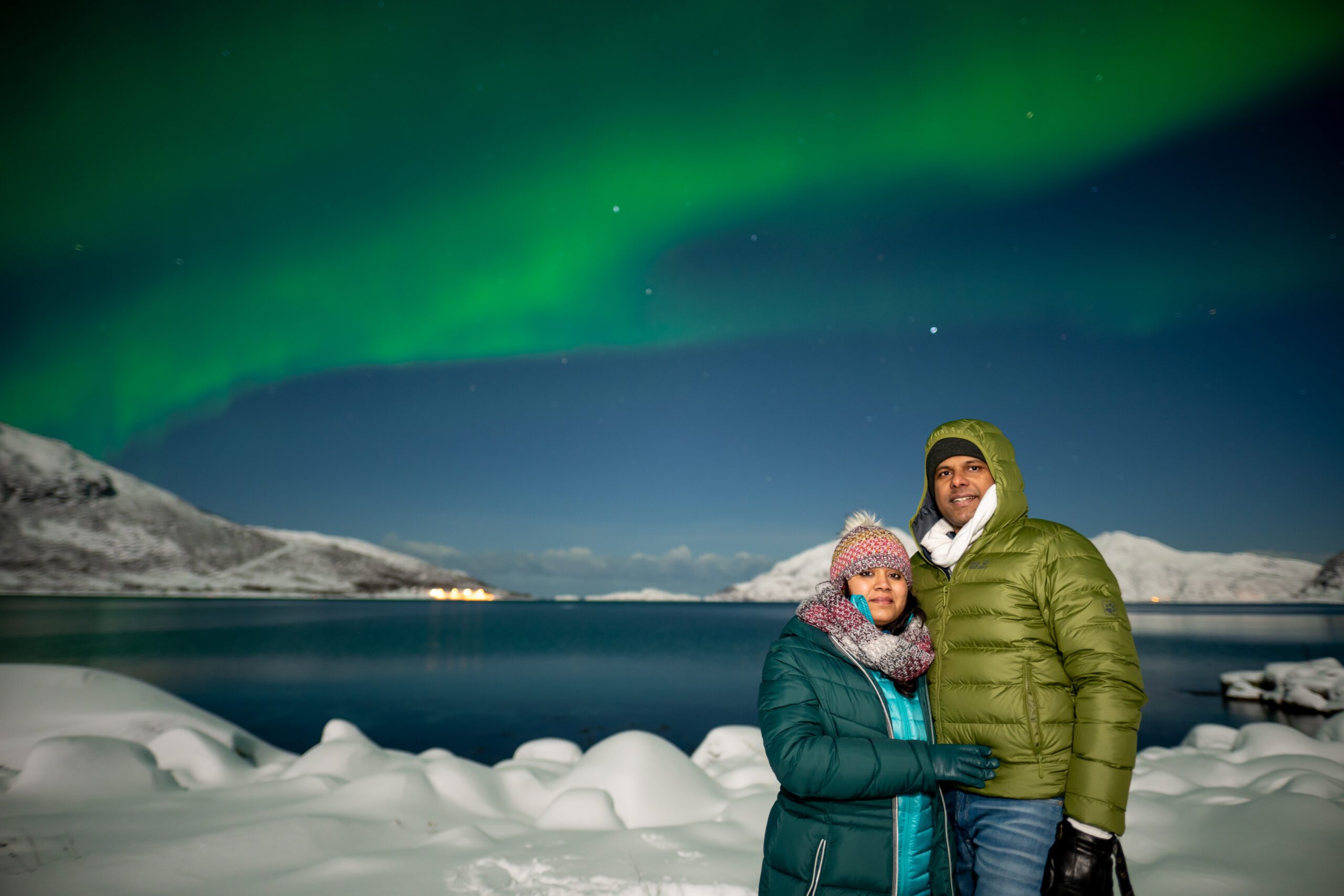
Surviving Arctic nights under open skies requires more than basic winterwear. Temperatures around Tromsø can plunge to –20°C or colder during peak aurora season, and wind chill only makes it worse. Without proper clothing, even the most dazzling light show can become a miserable experience. Start with moisture-wicking thermal base layers (not cotton), add a thick fleece or wool mid-layer, and finish with an insulated, waterproof outer shell. Breathability and wind resistance matter just as much as warmth. Insulated gloves, a neck gaiter or balaclava, and a windproof hat that covers your ears are musts. Footwear often goes overlooked—standard boots won’t cut it for standing still on icy terrain. Choose insulated, waterproof boots with thick soles and wool socks to retain heat. Pack chemical toe and hand warmers for extra comfort during long photo sessions. Many tour companies offer rental gear, but availability is limited during peak weeks. Dressing incorrectly can force early returns, missed shots, or even frostbite risk. Cold is part of the aurora experience, but discomfort shouldn’t be. Dressing in appropriate technical layers keeps you focused on the sky, not your shivering. The right gear is your ticket to staying out longer—and seeing more.
Rent a car to chase clear skies independently

Self-driving in Northern Norway offers unmatched flexibility for serious aurora seekers. While guided tours are convenient, renting a car lets you chase clearer skies without being tied to a preset schedule or route. Cloud cover in Tromsø can vary dramatically over short distances—sometimes only 30 minutes inland reveals perfect viewing conditions while the coast stays overcast. With a rental car, you can act quickly on weather updates, aurora apps, and live KP index alerts. It’s especially useful during full moon weeks when light pollution from populated areas becomes more limiting. Be prepared for winter roads—studless winter tires are standard in Norway, and main highways are well-maintained. Still, cautious driving and familiarity with icy conditions are essential. Renting a vehicle also opens up hidden gems like Lyngenfjord or Kvaløya, where the aurora can shine above mountain backdrops or frozen lakes. Bring a thermos, warm blankets, and a power bank for your phone and camera. Freedom comes with responsibility, but for those who prefer control and want to tailor their aurora hunt to the best odds each night, a rental car is the most empowering choice. Just remember—safety first, skies second.
Choose vantage points: Observatory Hill, Sommarøy, Lyngen Alps
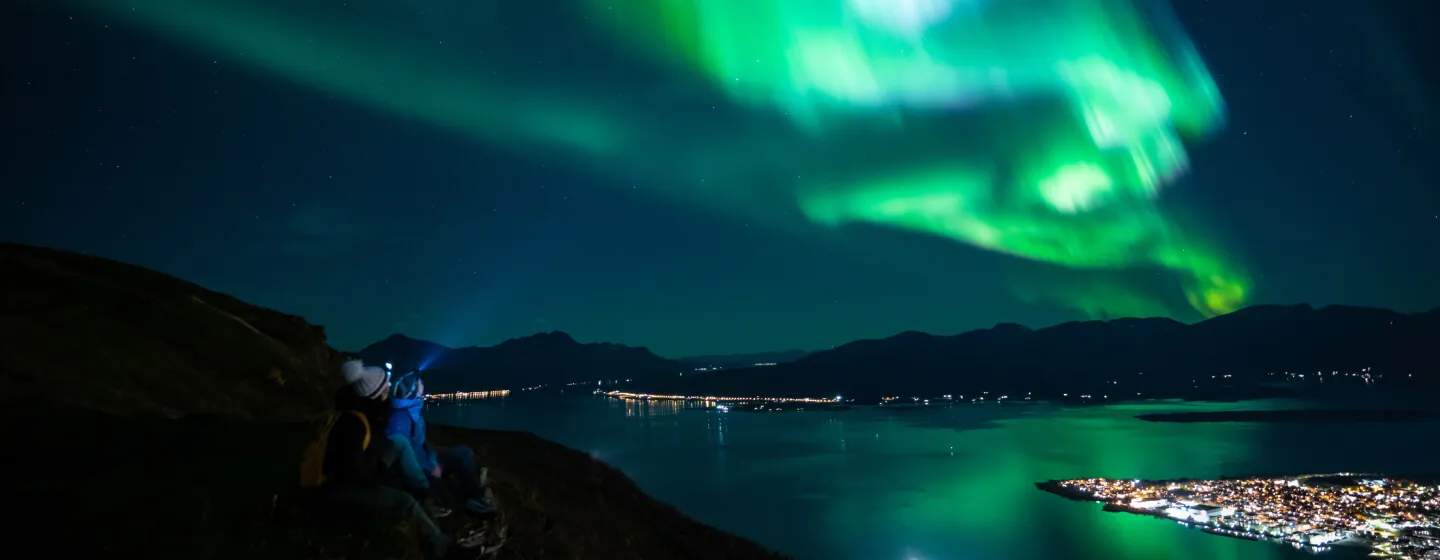
Certain spots around Tromsø consistently deliver breathtaking aurora views—thanks to elevation, darkness, and open horizons. Observatory Hill, just outside the city, provides a quick escape from light pollution while offering panoramic vantage points ideal for those without a car. For coastal magic, Sommarøy’s tiny island community pairs ocean reflections with clear Arctic skies and minimal interference. It’s a favorite for both photographers and locals. Meanwhile, the Lyngen Alps offer rugged backdrops and remote valleys that frequently enjoy clearer skies due to localized microclimates. These towering peaks add dramatic contrast to aurora photos, especially when snow-covered. Reaching Lyngen requires a longer drive or guided tour, but the scenery makes it worthwhile. All three spots benefit from geographic isolation and low atmospheric moisture, especially on cloud-prone evenings. Bringing a tripod and arriving before twilight ensures you’re ready when the lights begin to dance. While spontaneous roadside pull-offs can yield good results, these named locations remain reliable because they balance accessibility with stunning visibility. Prioritizing known aurora vantage points gives you a strategic edge—whether you’re chasing solo or joining a guided tour. The lights may be elusive, but the right location often makes all the difference when the sky begins to glow.
Book tours with photo tips & tripod included
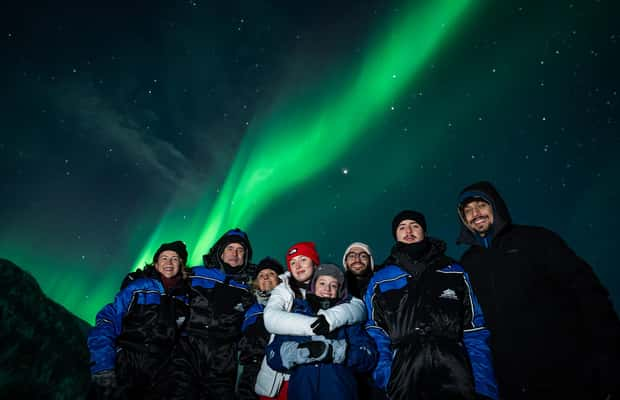
For first-time aurora photographers, choosing a tour that includes photography instruction and gear support can be a game-changer. The Northern Lights require very specific camera settings—long exposures, manual focus, low ISO—and many travelers arrive unprepared. Tours that provide tripods and help with setup eliminate guesswork, especially when shooting in extreme cold. Expert guides assist with composition, exposure tweaks, and troubleshooting, so even beginners leave with frame-worthy images. Some even lend wide-angle lenses or filters for clearer shots. Group leaders often double as seasoned photographers and monitor KP index spikes or incoming cloud banks while helping guests adjust their settings on the fly. These services ensure you’re capturing the full intensity and movement of the aurora—not blurry green smudges. While DIY trips can be rewarding, frustration runs high without proper technique or stable gear. A guided photo-friendly tour maximizes both viewing and shooting success. Look for companies that advertise hands-on coaching and include gear rentals in the price. These tours tend to move slower and visit more photogenic locations, creating the perfect environment for learning. For travelers who want to go home with more than just memories, this added focus on aurora photography is worth every kroner.
Monitor aurora apps and live weather forecasts

Tracking Northern Lights activity in real-time boosts your chances of a successful chase. Aurora-specific apps—like My Aurora Forecast, NorwayLights, and Aurora Alerts—combine solar storm forecasts, KP index spikes, and cloud cover overlays to help predict visibility. These tools are especially useful in Tromsø, where conditions can shift hourly. Understanding how to interpret KP values (strength of geomagnetic activity) and local weather maps gives you a head start before heading out each evening. Some apps offer alerts when KP levels exceed a certain threshold, while others integrate regional webcams showing current sky clarity. For weather, the Norwegian Meteorological Institute (Yr.no) provides hyperlocal forecasts trusted by locals. Apps alone aren’t foolproof, so cross-checking multiple sources, including satellite maps and radar, adds reliability. Guides use these tools nightly, and solo travelers should too. Familiarizing yourself with their features before arriving saves time when the window opens. Planning your route around visibility zones becomes significantly easier when you’re following live data. The aurora is as much a game of patience as it is positioning—knowing where to be and when to go is everything. With the right digital tools at your fingertips, the sky isn’t just the limit—it’s your moving target.
Be ready to drive long distances for clear skies

Aurora hunters in Arctic Norway often find the best displays aren’t directly overhead in Tromsø, but hidden miles away under clearer skies. Cloud cover is the biggest enemy, not solar activity. That’s why experienced chasers are prepared to drive hours inland—or even into neighboring Finnish Lapland—when forecasts turn murky. Northern Norway’s microclimates mean conditions can vary drastically within a 50–100 km radius. One valley might be socked in while another glows under open sky. Tour companies often clock 200+ km round-trips in a single night just to find visibility. For independent travelers, this means staying fueled, packing food, dressing for extreme cold, and carrying emergency supplies. Roads are generally well-maintained, but icy terrain and long stretches between services demand caution. Keep tire chains, headlamps, and a power bank for phones and cameras. Offline maps also come in handy where reception drops. Prioritize flexibility and don’t lock yourself into a single spot. Your willingness to go the distance—literally—can determine whether you end the night in awe or frustration. If skies are murky above Tromsø, your perfect aurora photo might be waiting two hours east. The lights reward effort, and in the Arctic, mobility is power.
Combine with activities: fjord cruise, snowmobiling, reindeer sled

Maximizing your time in Arctic Norway means pairing aurora chasing with unforgettable daytime adventures. While nights are reserved for the Northern Lights, the region offers equally compelling experiences under the winter sun. Embark on a silent fjord cruise through icy waters, where snow-dusted cliffs tower above and orcas or humpbacks may breach nearby. Glide across pristine landscapes on a snowmobile tour, often leading to remote, photogenic spots inaccessible by foot. For a slower pace, reindeer sledding with Sámi guides offers cultural depth alongside snowy serenity. These add-ons not only diversify your itinerary but help you experience northern Norway’s natural and cultural richness. Some operators offer combination packages—an afternoon reindeer sled tour followed by an aurora hunt—saving you time and booking effort. Whether it’s cross-country skiing through pine forests or ice fishing on a frozen lake, daytime pursuits set the stage for magical nights. Tired legs and fresh air only make the evening’s stillness feel more earned. These activities ensure that even if the aurora hides behind clouds one night, your trip remains full of highlights. Norway isn’t just a destination for skywatchers—it’s a snow-drenched adventure playground built to satisfy every curious traveler.
Avoid mascara—it melts in Arctic moisture

Beauty routines don’t always survive Arctic conditions. One often-overlooked detail among aurora chasers—especially those expecting to pose for photos—is avoiding mascara. In subzero temperatures with high moisture levels, even waterproof formulas tend to smudge, freeze, or melt unexpectedly. Foggy breath combined with wind and cold-induced eye-watering results in streaked makeup, uncomfortable clumping, and blurred lenses during photography. This becomes especially problematic when standing in one spot for long periods or when warm van interiors cause sudden condensation on your face. Skip mascara entirely, or opt for oil-free, tubing mascaras that don’t flake or smudge with tears or frost. Some travelers also wear clear mascara or apply minimal product to reduce risk. Since most aurora photos require long exposure times, even minor smudges show up under flashlight or headlamp lighting. The goal is to stay focused on the sky—not constantly wiping your eyes or checking for raccoon eyes. A minimalist approach to makeup ensures less distraction and cleaner, more natural shots. If you’re planning a memorable photoshoot under the aurora, prioritize comfort and practicality. In the Arctic, function always trumps fashion. Staying warm, dry, and photo-ready doesn’t require perfection—just preparation.
Capture shots with wide-angle lens + tripod

Photographing the aurora requires more than a smartphone—it demands gear capable of long exposures and wide framing. A wide-angle lens (14–24mm on full-frame, 10–18mm on crop sensor) allows you to capture both the sweeping sky and dramatic foregrounds like mountains or frozen lakes. Low f-stop lenses (f/2.8 or faster) are preferred, as they let in more light during short exposures—critical for preserving detail in rapidly moving auroras. Equally essential is a sturdy tripod. Without one, even slight hand movement ruins the sharpness required for long-exposure shots. Avoid flimsy travel models; strong winds and uneven snow require a solid base. Set your camera to manual mode, use a 2–5 second exposure, ISO 800–3200, and focus manually to infinity using live view zoom. Remote shutters or 2-second timers eliminate shake. Pack extra batteries—cold drains power quickly—and bring lens cloths to wipe condensation. Aurora displays change by the second, so having your gear prepped before the show begins gives you more time to enjoy and experiment. For those aiming to go home with more than just memories, a wide-angle lens and a dependable tripod are non-negotiable tools. The aurora deserves to be captured in all its ethereal glory—with clarity and scale.
Chase during new moon for darkest skies
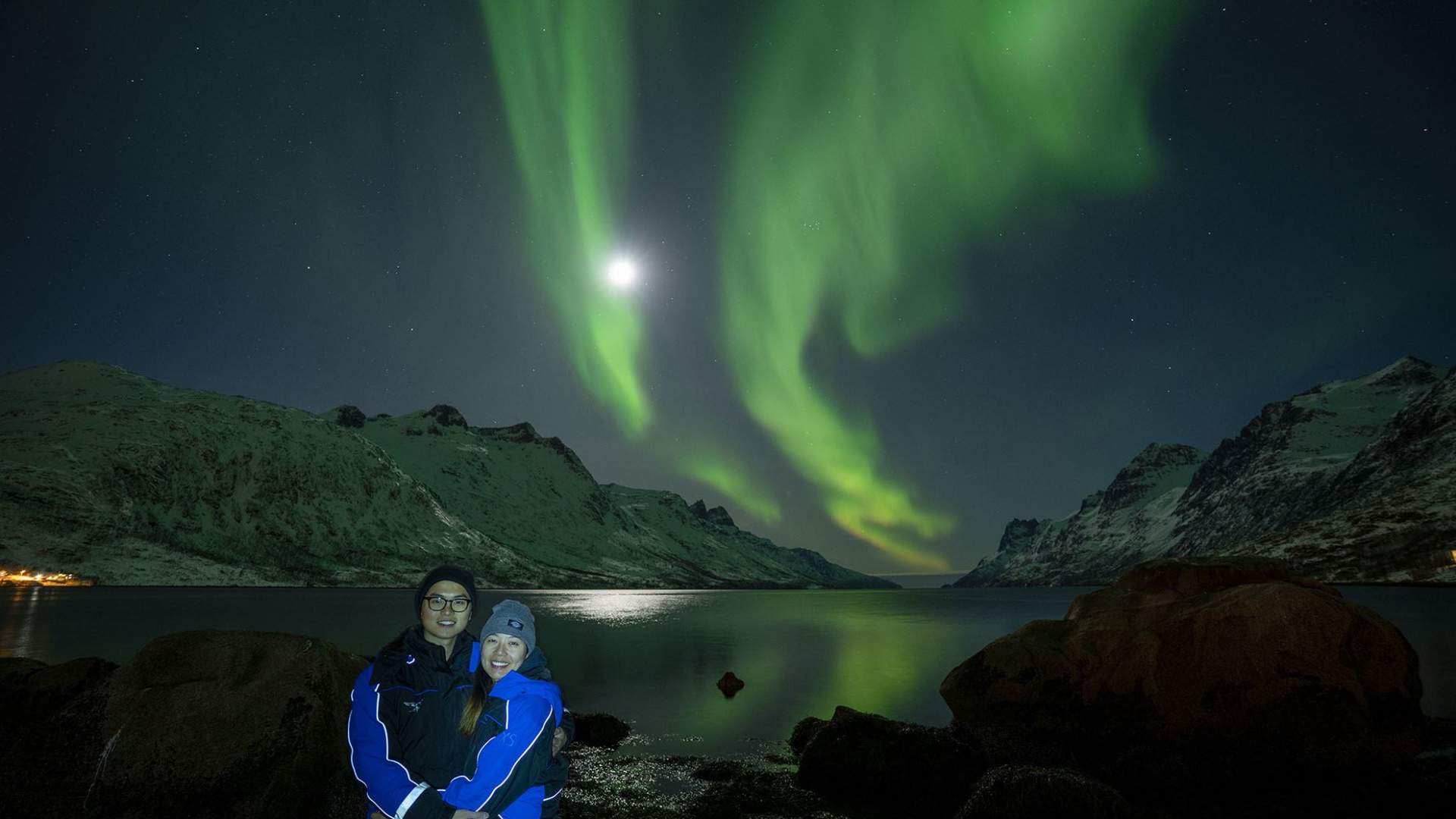
Aurora visibility is dramatically affected by light pollution—including natural sources like the moon. Planning your trip around a new moon phase ensures the darkest possible skies, allowing the aurora’s vivid greens and occasional purples to shine with full intensity. A full moon, though beautiful, can dilute or wash out faint displays, especially for photographers using long exposures. In contrast, moonless nights let the lights appear more saturated and dynamic against a pitch-black canvas. This is particularly crucial in coastal areas like Tromsø, where reflection from snow and water already amplifies ambient light. While strong auroras can still pierce through moonlight, the subtle arcs and veils of lower KP activity often go unnoticed unless the sky is dark enough. New moon periods typically offer about 5–7 days of optimal viewing conditions—two days before and after the actual new moon date. Coordinate your trip dates accordingly and cross-reference them with aurora forecasts and weather outlooks. Timing your visit to align with a new moon doesn’t guarantee auroras, but it significantly increases your chances of witnessing their true brilliance. For skywatchers and photographers alike, the absence of moonlight isn’t a loss—it’s a strategic advantage.
Trust experienced guides—they know local microclimates

Local expertise is invaluable when chasing the Northern Lights in a region known for unpredictable weather patterns. Tromsø and its surroundings experience rapid shifts due to the meeting of oceanic and inland air masses, creating microclimates that only seasoned guides truly understand. These professionals monitor real-time radar, analyze cloud movement, and apply years of experience to anticipate where clear skies will emerge—even if it means driving over a mountain pass or heading deep into Finnish Lapland. They also know which areas are likely to remain snow-free for easier access or which frozen lakes offer the best unobstructed views. While apps and forecasts provide data, guides interpret that data within the context of the land. Their instinct for timing and route adjustment often makes the difference between an average night and a spectacular one. Many offer personal insights, folklore, and cultural context that enrich the experience beyond just “chasing lights.” Trusting these experts also removes the stress of icy driving and technical photography setups, allowing you to focus on the magic above. For those unfamiliar with Arctic conditions or limited by time, putting your faith in a skilled local guide isn’t just smart—it’s essential to maximizing your aurora adventure.
